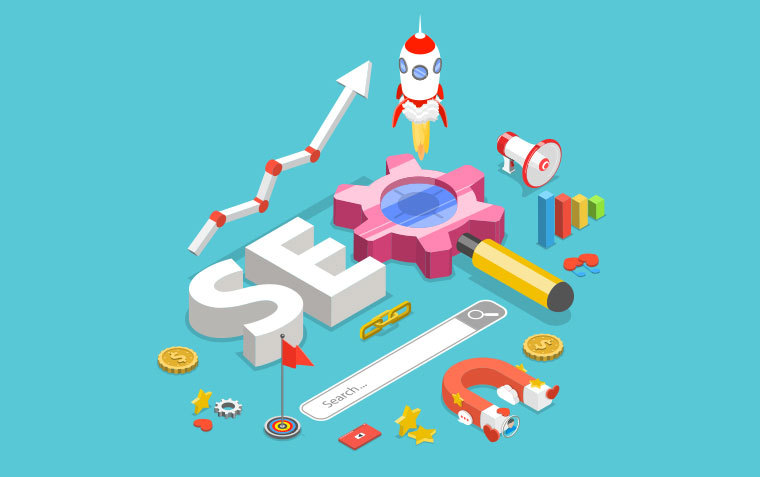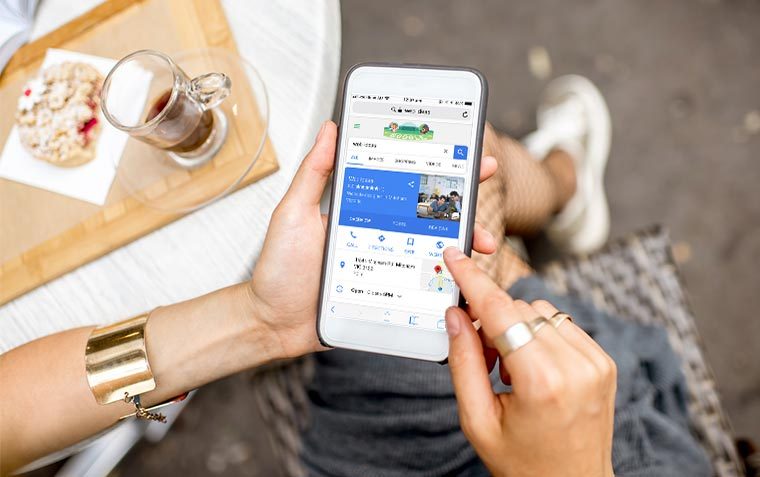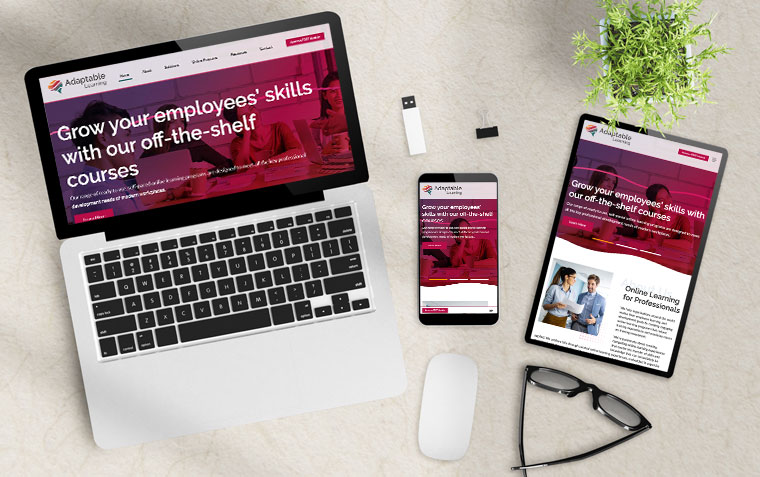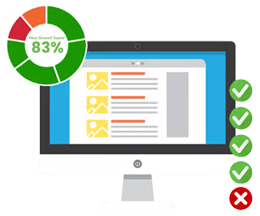SEO and WebGUI - How they work together

Search Engine Optimisation (SEO) is critical in today’s digital landscape. With an estimated 95% of web traffic going to results on the first page of a search it’s important to be up there. This is why WEB IDEAS’ custom WebGUI sites have built in SEO capabilities for our clients to use.
Inbuilt SEO Capabilities
URLs
The URL (colloquially known as a ‘web address’) is what tells the internet where to find the page it’s looking for. Some URLs, especially on sites with lots of data, can end up with strings of numbers. This is ok for computers because it can give lots of unique web-addresses, but not so good for users. You want to keep your URLs short and sweet, providing the most important information about that page.
WEB IDEAS’ WebGUI sites will automatically create a URL based on the page title but can be created and edited separately if needed.

Appropriate Heading Styles
Heading styles are an excellent resource for both search engines and users. Anything in a ‘heading tag’ is given more importance than other content by search engines so are the perfect spot for some keywords. From a user’s perspective heading styles break up the content and make it easier to scan the page for the content they’re looking for. This increased usability helps current SEO algorithms decide if your site is worth showing users.
The WEB IDEAS content editing tool makes it easy to select which heading style you want from those that are designed for your site.

Page Speeds
A fast website is a usable website and a usable website is good website. 47% of users expect a site to load in under 2 seconds and 40% will abandon a site if it takes more than 3 seconds. Sites with a high bounce rate and longer loading times are ranked lower by search engines than comparable sites with a better dwell time and lower bounce rate. So to get a spot on the coveted first page you need to make sure your content loads quickly.
Sites built by the team at WEB IDEAS have only the code that’s needed for that site to keep optimum speeds. Having extra code from plugins that aren’t in use only slows the site down and reduces your conversions.

Page Names
The page name, or title, is what tells users and search engines what that page is about. On a tab it’s the text that the user sees to tell them what page they have open and on a google search it’s the link text that you click on to go to the result.
The ideal title includes a keyword that you want that page to be found for and flows naturally. It communicates clearly what information is to be found on this page and draws users in.
With our WebGUI Content Management System (CMS) you can change the page title with ease so that it best reflects your website. If you don’t have a page title the site will automatically fill it in with the menu title.

Meta Descriptions
Meta descriptions are the bit of text in a search engine underneath the title that tells users what information is on the page. Whilst Google places less emphasis on meta descriptions than they used to, it’s still a great tool for users and can encourage them to click on your page. This higher Click Through Rate (CTR) has a positive impact on your rankings so it’s definitely worth looking at.
Our WebGUI sites give you a box to edit your page’s meta description titled “Synopsis”. This makes it easy to make any changes that you need.

Image Alt Tags
Image Alt Tags came about to improve accessibility on the web so that users with screen readers have a way of understanding visual elements on the page. This has evolved over the years to assist Google with image searches as well as giving users an understanding of what the image is meant to be if it doesn’t load.
Image alt tags don’t have as much impact on your ratings as other methods so shouldn’t be the top of your list in your SEO campaign but is easy to do moving forward.
Whenever you upload an image to your custom WebGUI site you can input an Image Alt tag easily. If no alt tag is given it will default to being the article title.

Linking Between Pages
Utilising internal and external links on your website can help you gain reputation and relevance in your industry. The two types of links are internal links, links to other pages within your site, and external links, either ‘outbound’ links from your site to another, or ‘inbound’ links that come from another site to you.
Internal links help users to navigate your site and find other services or posts that may be relevant to them. This helps search engines understand which pages are most important on your site.
External links are beneficial for both sites with there being advantages to both inbound and outbound links. You have more control over outbound links so that’s what we’ll focus on. These links give your users more value and linking to highly reputable sites puts you in association with them.
Adding links throughout your content is as easy as highlighting the text you want to link and selecting the “add hyperlink” button in the editor. Internal linking only needs to include after the first ‘/’ (eg. /services) whilst outbound links need the full address which can be copy/pasted in. When you don’t want users to leave your site when they click on a link use the “Target” tab and select “New Window (_blank)” to send them off to a new tab.

Extra SEO You Can Do (and we can help with)
Keyword Research
The importance of keyword research has remained a crucial part of digital marketing over the years. Keyword research ensures that you’re targeting words and phrases that your ideal consumers are actually using as well as topics that they’re interested in. This feeds into what your content should be.
There are some great resources that help you understand how to do keyword research yourself but hiring a professional will yield better results. The team at WEB IDEAS has experience in keyword research and analysis and we can help you put your focus on the right topics.
Ask about our keyword research
Writing Appropriate Content
You’ve got a great looking website that should be working for you but somehow isn’t. The culprit is likely to be the content. Writing content for your website can be a daunting task. It needs to read as natural, include keywords and topics you’re focusing on, and be aimed at your individual audience.
Getting a good copywriter to go through your site is invaluable as they work with you to get the perfect balance and tone of voice. There are two main options with copywriting: supply the bulk of the content for them to touch up and edit; or supply dot points of what you want to get across on each page and getting your copywriter to build off that.
Image Optimisation
Making sure that your images don’t have too high a file size is important to keeping page speeds up. Optimising your images for the web means resizing them to fill the appropriate space as well as decreasing their quality just enough to reduce file size but maintain as much crispness as possible.
You can do this yourself using open-source software, like GIMP, or send them through to us to optimise. We’re also able to make adjustments to levels and contrast to make your image pop.
Image Naming
Like with image alt tags the name given to the image file helps Google to identify what the image is. Giving an image a more descriptive name like “kitchen-mitcham” is more helpful to a search engine than the default name a camera sets, which is often a string of numbers like “IMG_6811”.
Renaming each image can be done when they’re optimised or can be done individually in your file manager. We always make sure to save images with a more descriptive name so if you’re getting us to optimise them you can rest assured knowing that we’ll cover this for you.
There are many ways to improve your SEO performance and we work with you and your SEO company to get results. Contact the team at WEB IDEAS to help with SEO on your WebGUI site or organise training to make the most of these inbuilt capabilities.






